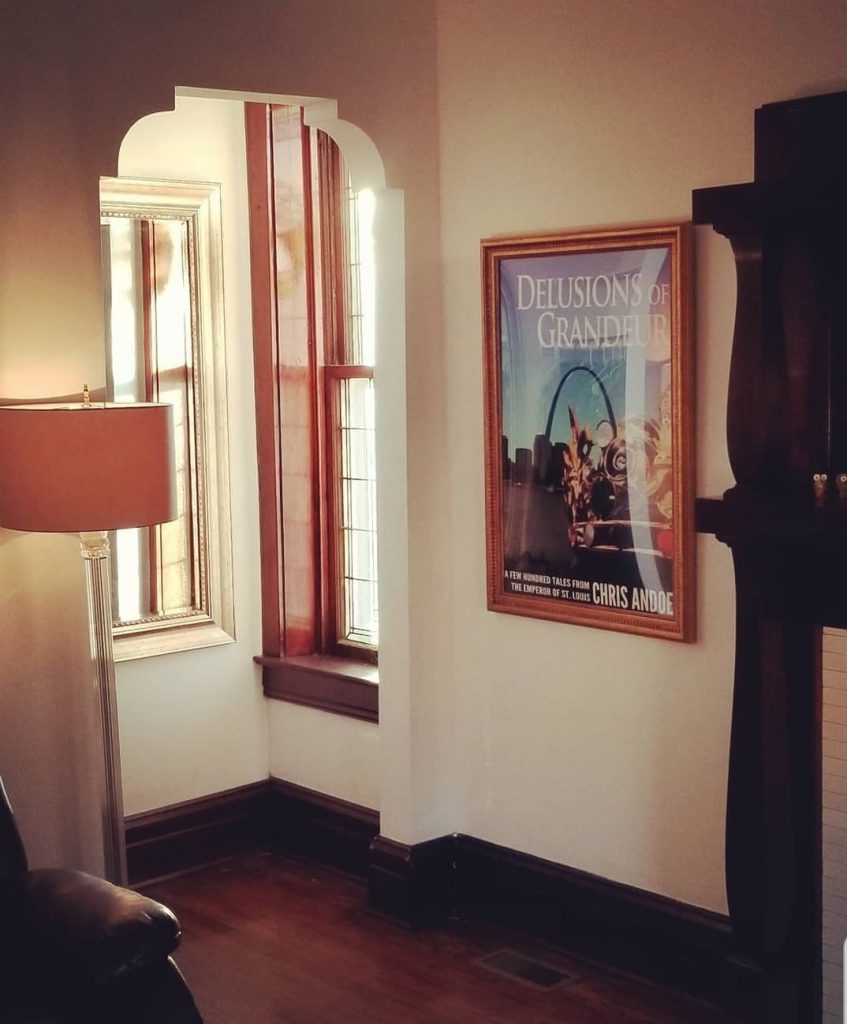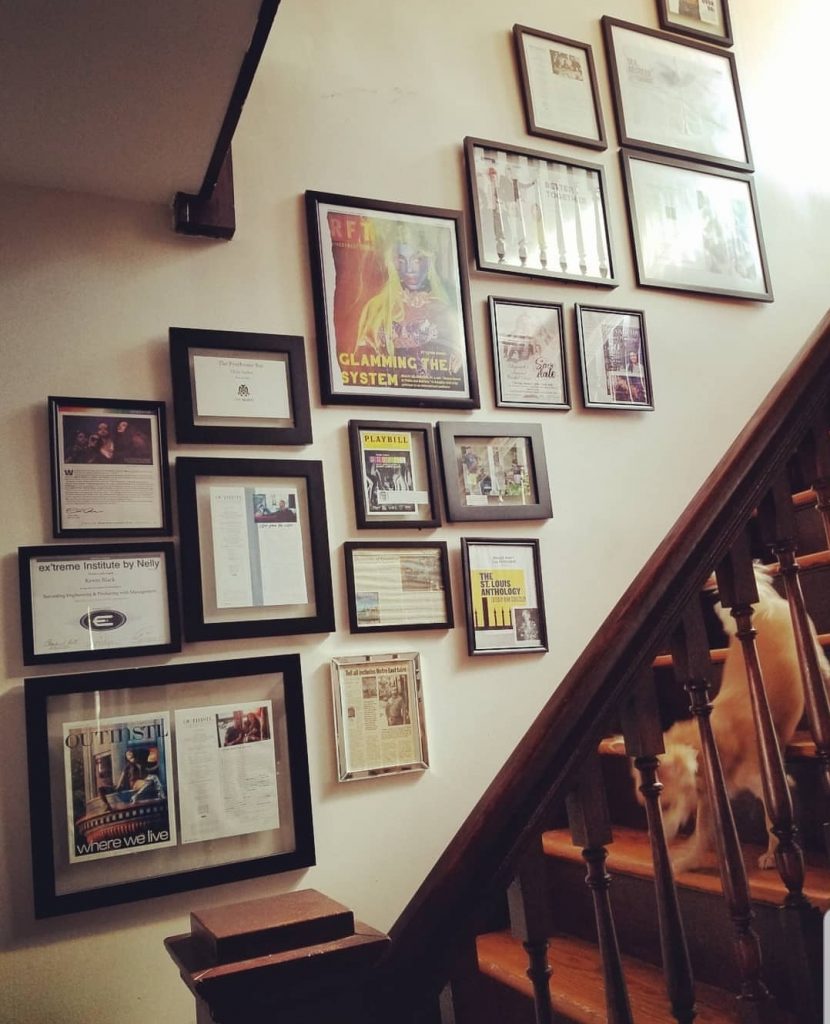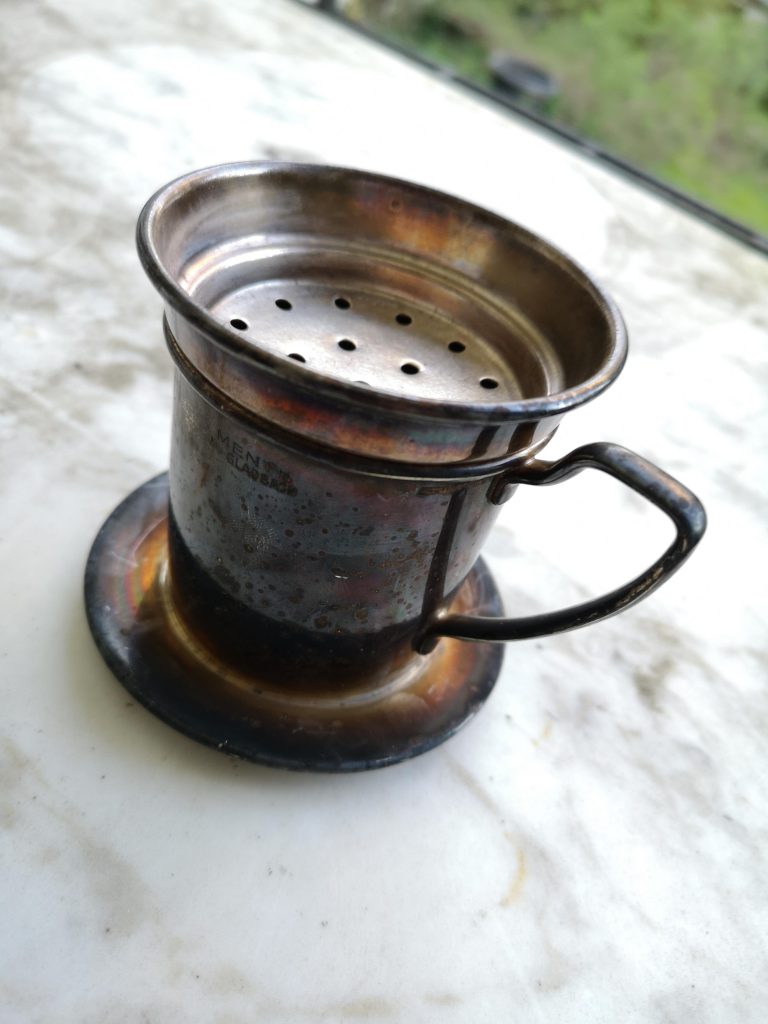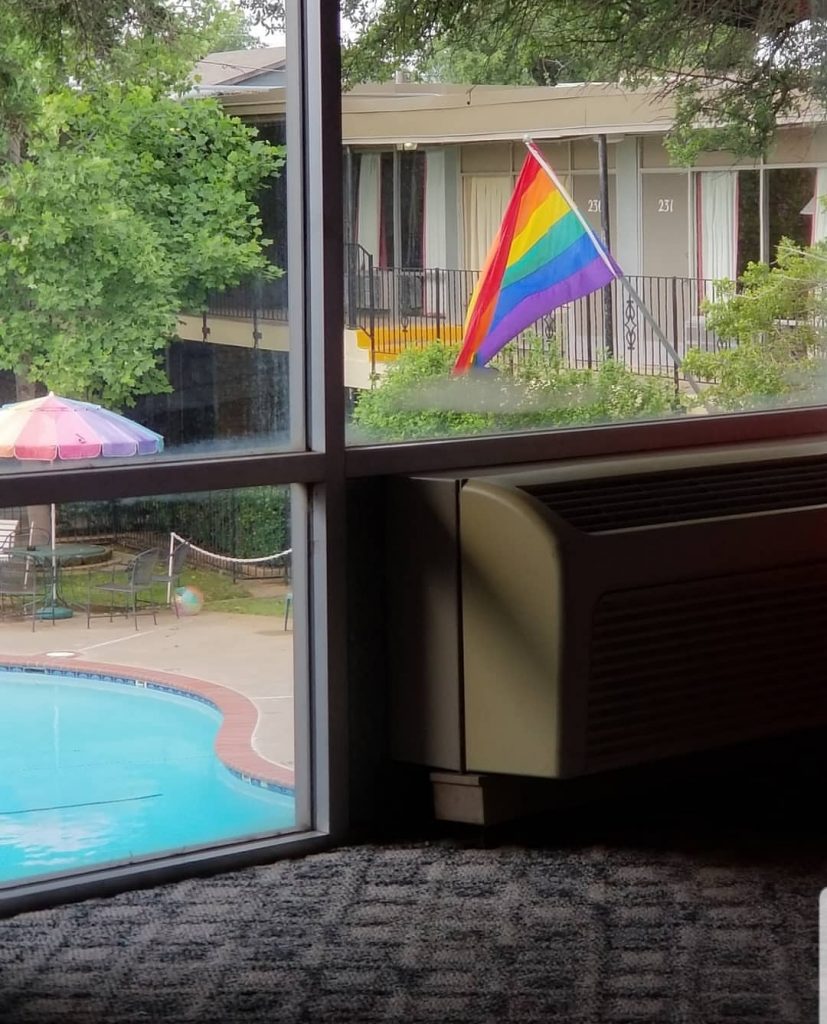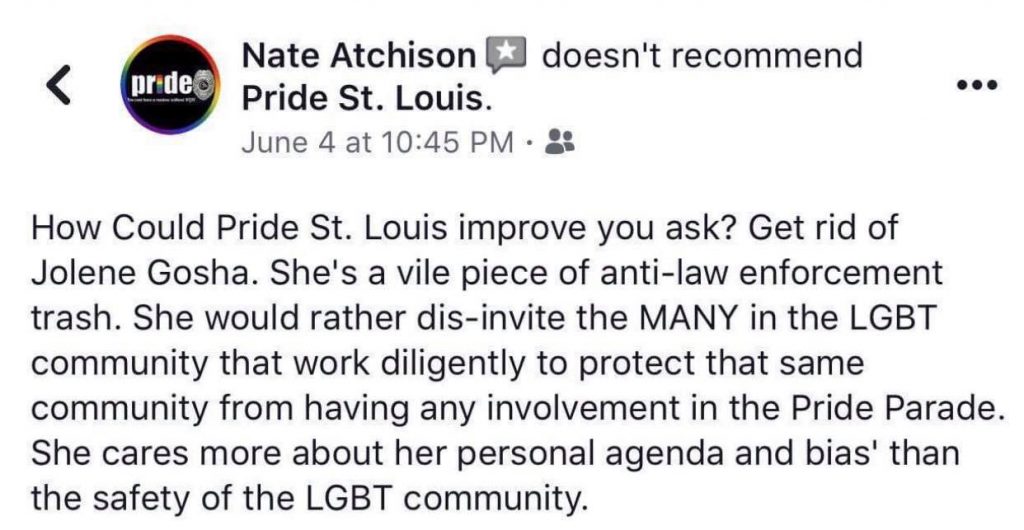“Midnight Annie’s Final Performance” was included in Belt Publishing’s The St. Louis Anthology
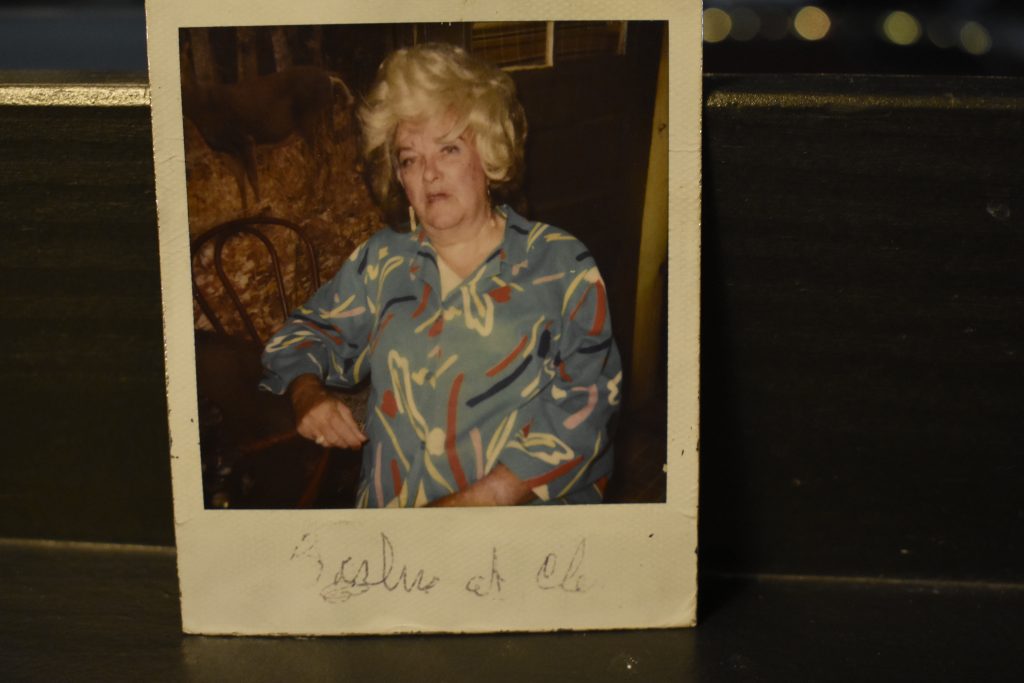
I woke up on Wednesday September 24, 2014, grabbed my phone from the nightstand and checked social media like I always did. The first post I saw was from a friend announcing that the bar where I spent my Friday nights, Clementine’s, was closing after the coming weekend. I was floored, and hoped it was just a rumor. The historic corner bar and restaurant, famous for their strong drinks and colorful characters, was one of my favorite things about St. Louis. It was the LGBT community’s embassy in Soulard, and for me symbolized permanence.
Entombed in the wall of the establishment were the remains of Midnight Annie, a drag queen who long frequented and performed at the bar. While laughing and drinking there with my friend Big David, I sometimes pondered having my own remains interred beside her, forever being part of the action. She passed in April 1995 at the age of 73, two years before I first moved to St. Louis, but I felt like I knew her after hearing so many tales of her antics. Her shows sounded like pure madness. She’d often sit down on stage, wearing her salt and pepper bouffant wig and sequin gown, and begin kicking up her heels and howling at the moon.
All morning I tried to get confirmation as I began working on the article. Bars were always rumored to be closing, and there’d been embarrassing retractions in the past. One bar, Novak’s, even had an emotional closing gala, only to open up for business as usual the following day. The LGBT magazine I wrote for, Vital Voice, had to balance the desire to break the story with the need to get it right, and our publisher decided we weren’t running the piece until we had a quote from one of the owners.
Rather than covering it as breaking news, I crafted the announcement like a eulogy, recalling the storied past of the place, how it was a cornerstone of the community, was the oldest surviving LGBT bar in St. Louis, and how there was no more prestigious spot to be during Mardi Gras than on the grand balcony above the entrance. In 2012, I was so determined to grace that balcony that I loitered around the guarded entrance to the upper floor, and the second the bouncer’s back was turned, bolted up the stairs. I strolled in like I was supposed to be there, tossing beads into the crowd below for ten or fifteen minutes until I sensed suspicion from the krewe, and nonchalantly made my exit.
The article was essentially written when I arrived at Clem’s and spoke to the bartender, who’d just learned the news himself in a letter from owner Gary Reed. It was then I got word that #Boom, Vital Voice’s bitter rival, just broke the story with a brief announcement and a quote from the same bartender. We ran our piece twenty minutes later. I then began working on gathering and documenting every story I could from the patrons during the remaining days. I knew my Friday night group, but there were so many people I didn’t know. People who were there during the day, or on different nights. I needed to meet and talk to as many of them I could in a desperate attempt to immortalize this place before it was too late. With a pen in one hand and a cocktail in the other, I lived, breathed and drank the moment. During those final days, I was embedded at Clem’s.
“It’s like Cheers, when I’m down and out there’s always someone here to lift me up. That’s the one thing that scares me to death: Where am I going to meet my friends? Where will us fading flowers go?” said Josie, 52.
That first night the news was so fresh and most everyone was in disbelief, while some were angry. A festive, slender man of about sixty, named Johnnie, was excited about my interviews, and told me who I should speak with.
“See the guy with the hot pink goblet? That’s Miss Davey. He’s been coming here every single day for years and they keep that goblet just for him. One day I asked Jan, ‘How do I get my own goblet?’ and she said, ‘Well, you’ve gotta come here every day!’ You need to talk to him!” Johnny said, but returned a moment later, “He’s too upset and is afraid of what he might say. Give him a little time.”
I spoke to a big, gruff, bearded man named Dennis who, in his booming voice, told me Clems was his first gay bar, then a frail, petite man walked through the door and Dennis shouted, “HEY HOWARD!” and pulled him in. “This is Howard, he was here for the grand opening!”
I greeted Howard, who told me he was 79 and lived on the east side. “I always stopped here to get my bridge drink,” he said. I suggested he grab a cocktail and then come back to talk.
“You’re giving him too much time, he might die in the next five minutes! He’s about a hundred and forty!” Dennis joked.
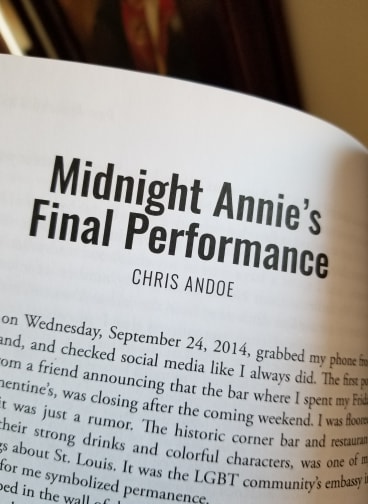
Later, at the tables on the old brick sidewalk out front, Dennis and his buddies agreed to tell me more stories if I’d smoke a joint with them. A group of six men shared tales about Clem’s, reminisced about other bars that came and went over the years, and recalled the tales of Midnight Annie. Legend had it she got the name back in the 1940s when she’d bribe a jailer to let her “entertain” inmates in the middle of the night.
“Oh I remember Midnight Annie,” one man began. “She was a trust fund baby and when she’d get an installment she’d blow it in no time. Once she sauntered into a Cadillac dealership and bought two Cadillacs. One for her and one for her trick! That’s just how she was. God, I still remember her sitting at that bar drunk as Hell with her lipstick going up her wrinkled face and her wig on crooked. She had this trademark high-pitched sound she’d make, and when she’d do it everyone around the bar would mimic it. Like a bird call.”
Many of the stories about St. Louis’ gay world came out of East. St. Louis, because gay bars were less likely to be raided there. Some of the bars sounded a lot like speakeasies.
“Those early days were revolutionary,” began a silver-haired gentleman named Beaux. “There were bars that were straight by day and gay by night, and Helen Schrader’s started out that way. Helen had been a notorious madam with 50 women working for her during her heyday. When one of her first girls, Alice, got old she worked the front door at the bar. You’d knock and Miss Alice would slide a little slot open and look at you. If she knew you, she’d let you in. If she didn’t, she’d tell you to go away.”
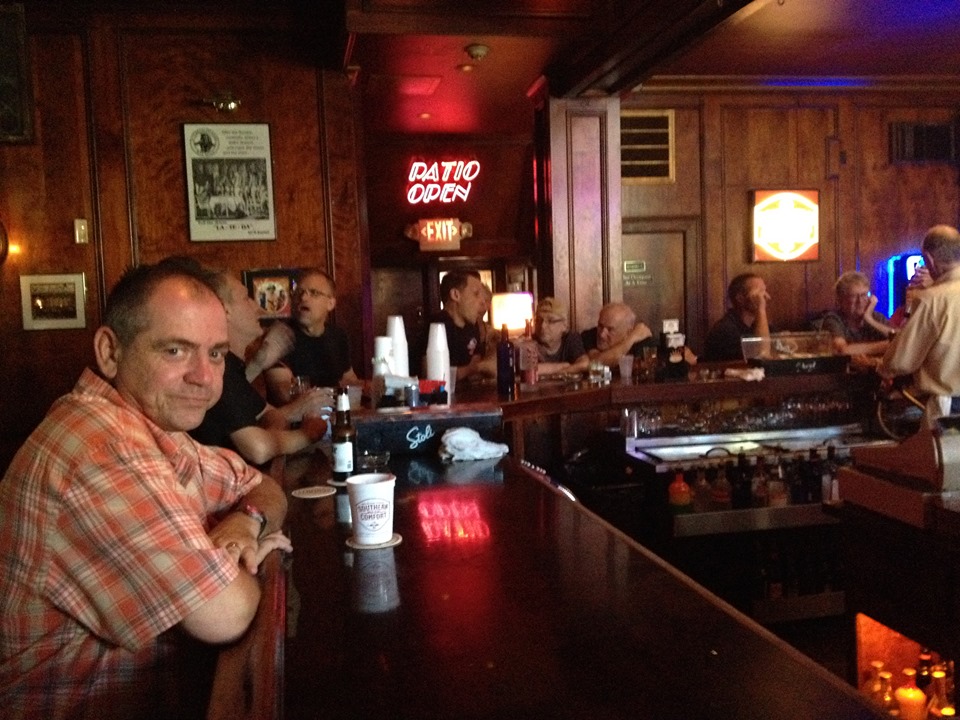
Stories also came in online. My friend Dan posted a memory on Facebook, and it really struck me because it was about a passing generation.
“One really busy night many years ago I had sex right there on the counter of the bar, maybe 400 in the bar at the time. Surprised? It brought back memories of the first owner, Wally Thomas. He sold it in ’85 but it stayed a gay bar. People don’t want to let go, but the past HAS to go. The past, the bars, the buildings, the people all have had their time and now need to go. And they will – no matter what is said. That place leaves far greater a legacy than I ever will. As one person said: The old heart of Gay St. Louis will cease to beat. I see the passages. The old gay ghettos, the book stores, the peep shows, the gay bars, their time has passed. My tribe, my people, my places, become part of yesterday’s mist. Museum pieces that fade and collect dust. And so does yours truly.”
While Monday would be the last day, Sunday afternoon was when the community at large came to say their goodbyes. It looked like Mardi Gras as the crowd spilled out of the bar into the street, where a BMW blasted music for the hundreds of people outside.
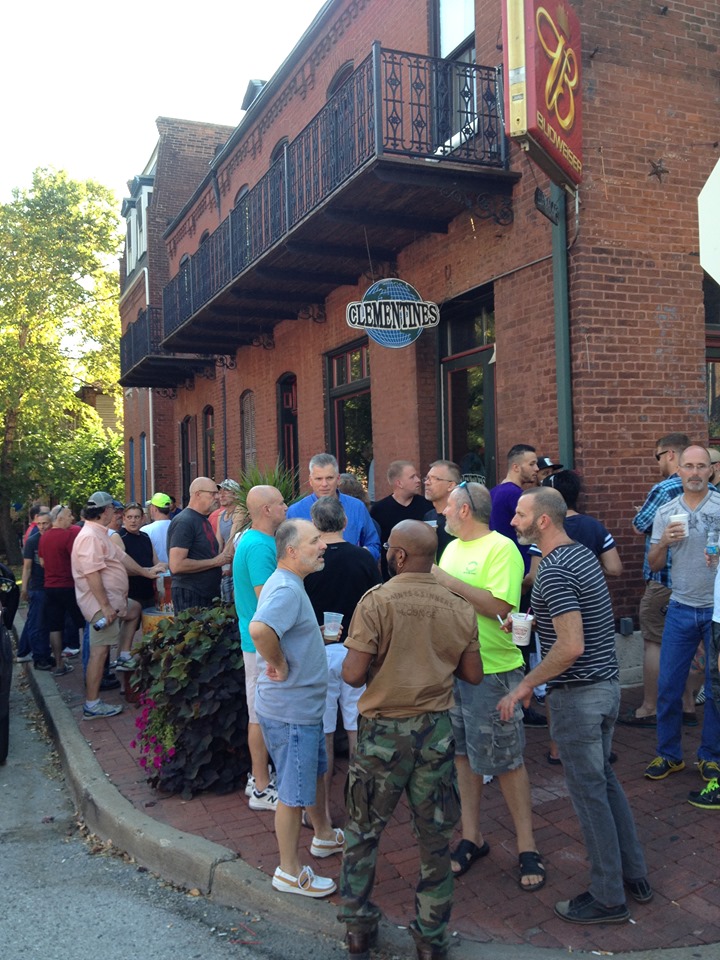
I had only been back in town for a few months, having moved to San Francisco to try to salvage a long beleaguered relationship, and then to New York to get over it. My heart, however, was always in St. Louis, and I was so thankful to be on the ground during these final days of Clementine’s. It would have killed me to miss them.
Steve Potter, a local NPR personality, was so moved and inspired by the stories Clem’s fading flowers shared with Vital Voice that he came out on the air, discussing his first visit to the bar decades earlier.
As the world opened up, gay bars nationwide were going the way of the dinosaur, especially those serving an older clientele. But this haunted town had such a memory, and rather than disappear, Clem’s would simply take its place in the local folklore.
I almost didn’t go to closing night, and Big David didn’t plan on going either. It was a Monday, I’d spent every waking hour there since Wednesday, and I thought it would be too sad. Around eight, however, I decided I would always regret not going. Since I was going, Big David came out as well. I walked in, and on the glowing dry erase marquee near the pool table I wrote, “Going down with the ship.”
The bar was crowded but not overly so, and the characters there were the ones who really loved the place. The spirits were higher than expected and the camaraderie was simply incredible as old friends hugged, laughed, and made toasts. Miss Davey, the daily regular who had his own hot pink goblet and had been too upset to be interviewed, came up and gave me a hug.
“I’m really sad, but I’m going to be ok,” he said, smiling.
When owner Gary and his late partner Jim bought the bar in 1985, they held their first drag show. Midnight Annie was the headliner. Unbeknownst to her, they promoted the evening as “Midnight Annie’s Final Performance” to make it more of a draw.
“Would you quit telling people this is my final performance?” an exasperated Midnight Annie kept admonishing.
I was less than a foot from Gary when, in the final hours, he took the mic, and the quiet, introverted man who’d hardly said anything over the years gave a rousing farewell speech. The whole place stopped to listen. He spoke about how much times had changed since the bar opened in 1978, and changed for the better. He spoke of the historic old brick building which was erected in the 1860s. He said all drinks were on the house until the last bottle was dry, and then he then brought up Midnight Annie.
“I always say my only child was a seventy-three year old drag queen,” he began, “and she’s leaving with me. Ladies and Gentleman, next to Jan is Midnight Annie!”
I’ll be God damned if he didn’t have Midnight Annie’s dusty urn—complete with the yellowed and water stained label—sitting there on the bar with a cocktail.
The crowd erupted with cheers and applause.
On that final evening there were people in attendance who’d come to see Midnight Annie’s final performance back in 1985. After a thirty year wait, she and Gary Reed finally delivered with a closing number the city will never forget.


